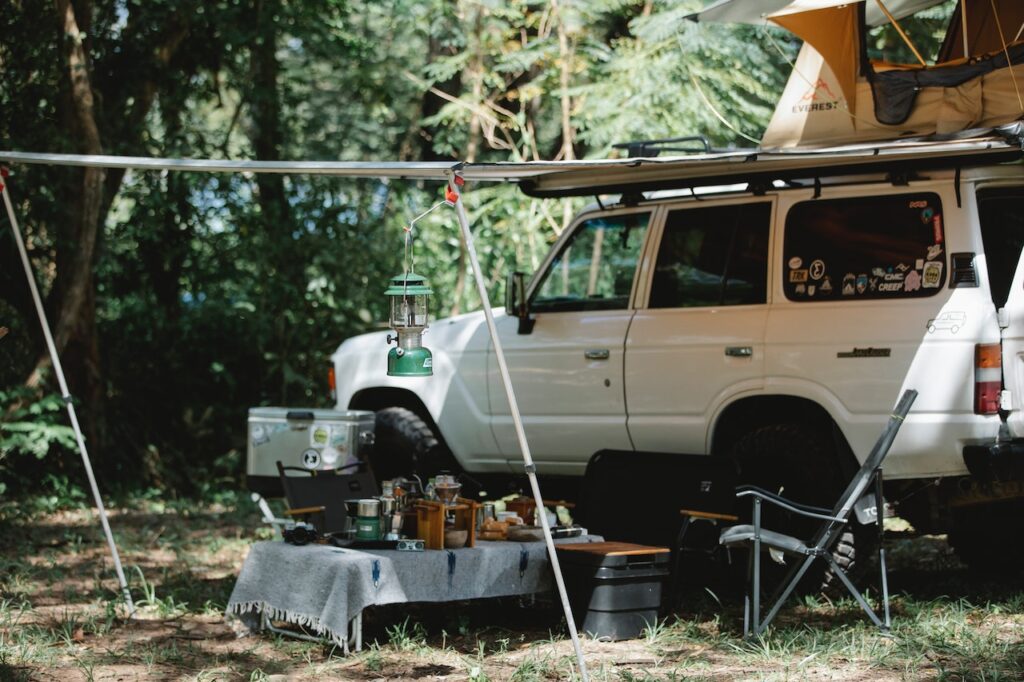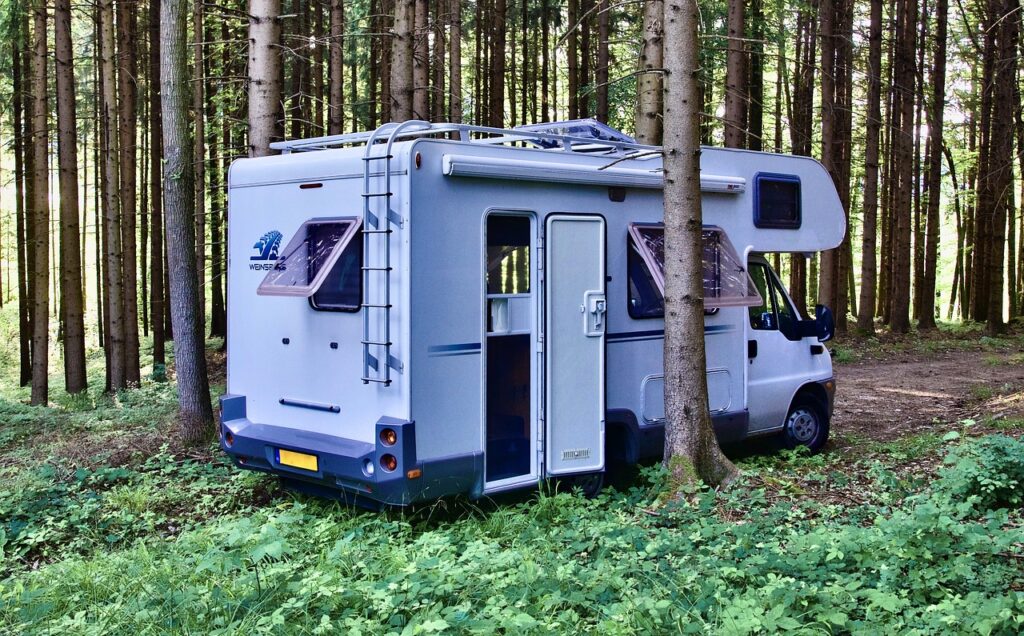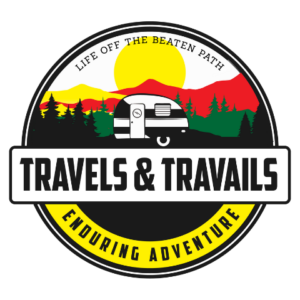Free camping, also known as boondocking, is a popular way for RVers and outdoor enthusiasts to save money and enjoy the great outdoors. Before heading out on your next camping adventure, you might be asking yourself, “Is free camping legal in the USA?”
Free camping is legal in designated areas such as the Bureau of Land Management (BLM), National Forest Service (NFS) land, and some state and municipal parks. Free camping on private land can also be found through apps like Boondockers Welcome.
In this blog post, you will learn about the laws and regulations surrounding free camping in the USA, as well as tips and tricks for finding and enjoying the best free camping spots.
Overview of Free Camping Laws in the USA

Free camping is when you camp on public or private land without paying for a designated campsite. And boondocking is camping without access to water, electricity, or waste disposal – any type of camping without hookups. This is often done in places like Walmart or Cracker Barrel parking lots, but it can be anywhere without hookups. If you’d like to know more about these definitions, see the article that I wrote about them.
Now, when it comes to the legality of free camping in the US, it’s important to remember that laws can vary from state to state. But generally speaking, free camping is allowed on public land managed by federal agencies like the National Forest Service, Bureau of Land Management, and Army Corps of Engineers. Just keep in mind that there may be some restrictions or regulations in place, like designated campsites or limits on how long you can stay.
It’s also important to note that some states have laws and regulations regarding free camping.
A lot of people think that free camping is always illegal or that it’s only allowed in super remote places. But that’s not always the case.
However, this is not the case. With proper research and planning, you can find legal free camping options in a variety of locations, from remote wilderness areas to developed campgrounds.
Free Camping on Public Land
One of the most popular options for free camping is on public land managed by federal agencies. This can include National Forests, Bureau of Land Management land, and Army Corps of Engineers land.
When it comes to free camping on public land, it’s important to obtain any necessary permits and follow regulations. For example, some National Forests require a free permit for dispersed camping, while others have designated free campsites. Additionally, some Bureau of Land Management land may have stay limits or restrictions on campfire use.
To find free camping options on public land, start by researching the different federal agencies that manage the land in your desired area. Check their websites for information on camping regulations and permit requirements. You can also visit ranger stations or contact the agency directly for more information.
When you’ve found a spot that meets your needs and follows the regulations, remember to practice Leave No Trace principles to minimize your impact on the environment. That way, the land will remain available for camping for years to come.
Finding Free Camping Spots on Public Land

Finding free camping spots on public land can be a bit of a treasure hunt, but with a little research and planning, you’ll be able to find the perfect spot for your next camping adventure.
One way to find free campsites on public land is to research different federal agencies that manage the areas where you are interested in camping. The National Forest Service, the Bureau of Land Management, and the Army Corps of Engineers are all great places to start. Each agency has its website with information on camping regulations, permit requirements, and designated campsites.
Another way to find free camping spots on public land is to stop by a ranger station or call in advance of your trip. I’ve found the rangers to be very helpful in giving details about the area, including the top free camping spots, rules, and any other important information I need to know.
For example, we stopped by the ranger station in Escalante Grand Staircase and the ranger was able to steer us clear of a camping route that would have been unsafe for our trailer.
You can also use online resources such as freecampsites.net, campendium.com, and the Dyrt app to find free camping spots on public land.
These resources provide information on thousands of free campsites, including user reviews and photos, so you can understand what to expect before you even leave home. Out of this list, Campendium is my go-to app to find free campsites. If you’d like to know more about finding free campsites, read this article that I wrote.
If you know the general vicinity where you want to camp, you can look at Google Earth to find dispersed campsites. A tell-tale sign for campsites is when you see an RV camped in a remote or semi-remote area.
Another way to find free camping spots on public land is by physically visiting the area and looking around. This can be a great way to discover hidden spots that are not well-known or advertised. Keep an eye out for pull-offs or dirt roads leading off the main road. While you should always be mindful of the laws and regulations of the area, some free camping spots can be found this way.
Keep in mind that free camping spots on public land can be popular, so it’s important to plan and get to your desired spot early in the day to ensure you secure a spot. And, have a backup plan in case your preferred spot is taken.
Always be prepared for any type of weather and bring enough supplies, including water, food, and firewood.
If you’d like more information on maximizing your boondocking stay, read this article that I wrote.
Free Camping on Private Land
Another option for free camping is on private land, with the landowner’s permission. This can include private property, such as a friend’s or family member’s land, or private campgrounds that allow boondocking.
When it comes to free camping on private land, it’s essential to obtain the landowner’s permission and follow any regulations they may have in place. For example, the landowner may have specific rules about campfire use or waste disposal.
To find free camping options on private land, start by asking friends, family, or acquaintances if they have property where you could camp. You can also check out websites such as Boondockers Welcome, which connect RVers with private landowners who are willing to share their land for free camping.
Tips for a Responsible and Enjoyable Free Camping Experience
Free camping is awesome but it’s important to be responsible and respectful of the environment and local laws. Here are a few tips for having a good time and doing it right:
Research and Plan Ahead
Before you head out, research the area you plan to camp in and make sure it’s legal to camp there. Check for any regulations or permit requirements, and make sure you’re familiar with the weather conditions and potential hazards.
Obtain Permission
If you’re camping on private land, make sure you have obtained the landowner’s permission and are aware of any rules or restrictions they may have in place.
Practice Leave No Trace Principles
This means leaving the area in the same condition you found it and minimizing your impact on the environment. Stay on designated roadways. Pack out all trash, bury or pack out human waste, and avoid cutting down trees or plants.
Be Self-sufficient
Free camping means you’ll be without amenities such as electricity or running water, so make sure you bring enough supplies such as food, water, and firewood.
Respect Wildlife
Be aware of the animals that live in the area and take steps to avoid disturbing them. Keep a safe distance, and never feed or approach wild animals.
Be Respectful of Other Campers
Free camping spots can be popular, so be respectful of your fellow campers. Keep noise levels down, and avoid setting up camp too close to other sites.
One YouTuber we watch, Nomadic Fanatic, set up his campsite and briefly left. When he came back to his site, a large group of campers had set up right next to his site. These drunk campers played loud music all night and screamed and yelled at each other. These campers were neither respectful nor courteous.
Respect the Laws and Regulations
Always check and abide by all the laws and regulations of the area where you’re camping. This includes fire restrictions, quiet hours, and stay limits.
Have a Backup Plan
If a free camping spot is full or not suitable for camping, have a backup plan. Knowing where the nearest campground or RV park is, can save you from a difficult situation.
By following these tips, you’ll be able to have a responsible, enjoyable, and memorable free camping experience. Remember that free camping is a privilege and not a right, so always be prepared, respectful, and respectful of the land.
If you’d like to know what you need boondocking on free land, read this article that I wrote.
State-Specific Laws and Regulations for Free Camping

State-specific laws and regulations for free camping can vary widely, so it’s important to research the laws in the state where you plan to camp. Here are some examples of state-specific laws and regulations for free camping in some states in the USA:
California
Free dispersed camping is typically not allowed in state parks, with few exceptions. One exception is Anza Borrego State Park. Also, there is plenty of free camping available in the BLM and NFS. In addition, free dispersed camping is permitted in some areas of Death Valley National Park.
Florida
Free camping is allowed on certain state lands in Florida, such as Florida Water Management Districts and National Forests, but is not available in state parks. There may also be restrictions on campfire use and stay limits. Free camping in Florida nearly always requires a permit and a reservation.
Oregon
Oregon has a variety of free camping options including free camping outside of coastal state parks and outside of certain city limits. There is also quite a bit of camping on BLM public lands. However, campfires may be restricted in certain areas, and there may be limits on how long you can stay in one spot.
Texas
Texas has some of the most scenic and iconic free places to camp. This includes free beach camping. for example, you can camp for free on Magnolia Beach.
Free camping is allowed in some County and City parks, wildlife management areas, and National Forests. However, campfires may be restricted in certain areas, and there may be limits on how long you can stay in one spot.
Utah
Free camping is allowed on Bureau of Land Management land and National Forest lands. However, campfires may be restricted in certain areas, and there may be limits on how long you can stay in one spot.
Wyoming
Free camping is allowed on Bureau of Land Management land, national forests, and in some state parks and historic sites like Seminole State Park. However, campfires may be restricted in certain areas, and there may be limits on how long you can stay in one spot.
It’s important to note that these are just a few examples of state-specific laws and regulations for free camping and it’s always best to check the laws and regulations of the state where you plan to camp.
You can check the website of the state park or national forest service, or contact the agency directly for information on camping regulations and permit requirements.
Conclusion
Free camping, also known as boondocking, is a great way to save money and enjoy the great outdoors. However, it does require preplanning and a little know-how.
